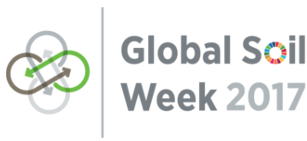This September, the international community will meet in New York to develop a new set of goals, the Sustainable Development Goals (SDGs). They will replace the eight Millennium Development Goals (MDGs) that expire this year. As long-term trends such as population growth and an increasing demand for water, energy and food are affecting sustainable development, the need to address the degradation of soils in the sustainable development agenda is apparent. For this reason, a diverse group of stakeholders from science, national and local governments, NGOs, the general public, and the arts discussed how to effectively integrate soils and land in the post-2015 sustainable development agenda. The conference “Soils, food security, and sustainable land management for sustainable development post-2015” took place from 11-13 February in Tutzing. It was organised by the Evangelische Akademie Tutzing, the Biovision Foundation for Ecological Development and the Millennium Institute, the German Federal Environment Agency and the IASS.
“The current landscape of sustainability governance is fragmented and does not address soil and land issues in a coherent manner. Important processes are converging in 2015, including the climate conference in Paris, the UN International Year of Soils, and the Sustainable Development Goals defining the Post-2015 development agenda“, stated IASS General Secretary Alexander Müller. The current draft of SDGs, produced after formal discussions, panels and U.N. working group meetings, includes 17 goals and 169 targets ranging from ending hunger to combating climate change and conserving oceans. Goal 15 is directly related to protecting, restoring and promoting the sustainable use of terrestrial ecosystems and to halting and reversing land degradation. Goal 2 calls for the achievement of food security and the promotion of sustainable agriculture. Goal 17 focuses on strengthening means of implementation and revitalising global partnerships for sustainable development.
The conference addressed the possible means of implementation for the SDGs, including monitoring, accountability, and reporting of the sustainable use of soils and land management. Michael Brander (Biovision) provided an overview of the Post-2015 Development Agenda process including the current status, next steps and expectation in terms of stakeholder involvement, indicator discussions and means of implementation. Ivonne Lobos Alva (IASS) presented an assessment of how land and soils have been addressed in the post-2015 sustainable development agenda negotiations to date. “While soils are addressed directly in some of the goals, they are crucial for the achievement of most of them”, she said. Lobos Alva highlighted the trade-offs and potential competition of demands observed in the overreaching analysis of the SDG agenda. For instance, goal 15 calls for a halt to land degradation and deforestation while goal 2 aims to ensure sufficient food for all and to double agricultural productivity of small-scale food producers. Increases in production could lead to the intensification of agricultural production or the further expansion of the agricultural frontier into forest areas. Lobos Alva cited several of these examples and called for an “integrated approach” to the implementation of the SDGs to address those problems.
The discussion highlighted necessary actions as well as open questions and in the ongoing process. These will serve as talking points at the Global Soil Week, hosted by the IASS from 19 to 23 April in Berlin:
– Multi-stakeholder mechanisms and processes on soils, food security, and sustainable land management are needed at all levels to advance sustainable development post-2015. How can this be achieved within the diversity of power structures, involvement and interest. How can we ensure that the public is also involved?
– New ways for communicating soils and their service are needed to mobilise broader public participation. How can the issues be framed and communicated despite the inherent complexity. How to avoid the trap of “this issue is too complex”?
– What is the responsibility of countries like Germany to contribute to the SDG agenda and in the national implementation?
– There is a need to define indicators for soils in the SDGs. Although the set of indicators agreed upon by the secretariats of the three Rio Conventions (land-use cover, land productivity and soil organic carbon) are useful, land degradation is a qualitative assessment rather than a quantitative measurement. How can we get this right?
– The issue of means of implementation and who is paying for this is an important consideration.
Contact:
Ivonne Lobos Alva
Research Associate
Global Soil Forum
Renewable Resources and the SDGs Forum
ivonne.lobosalva@iass-potsdam.de

